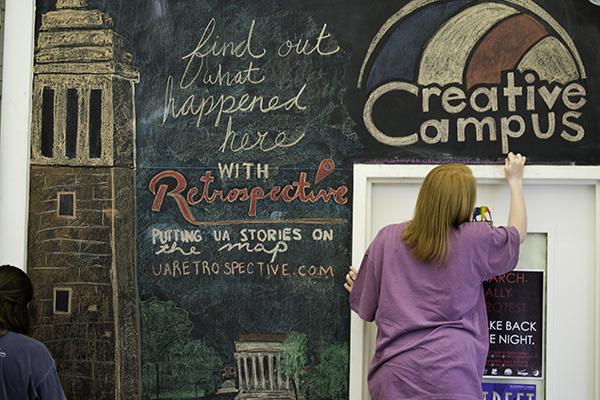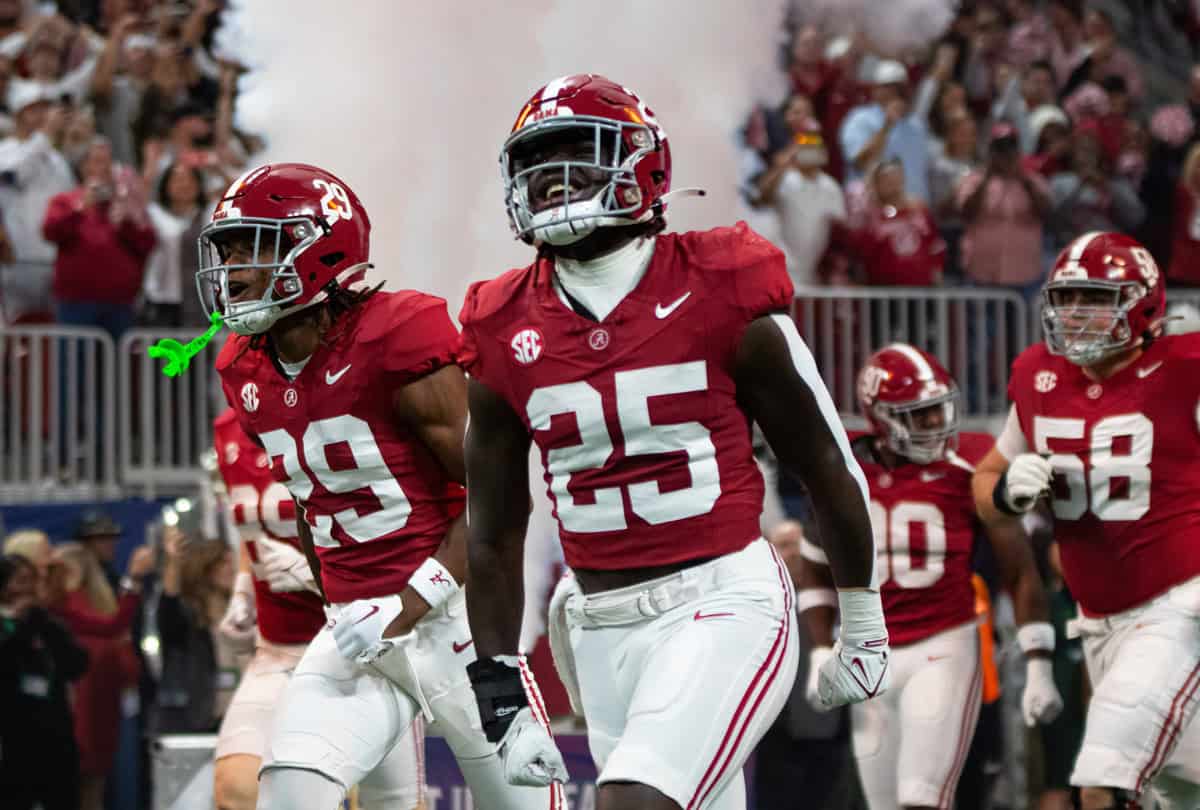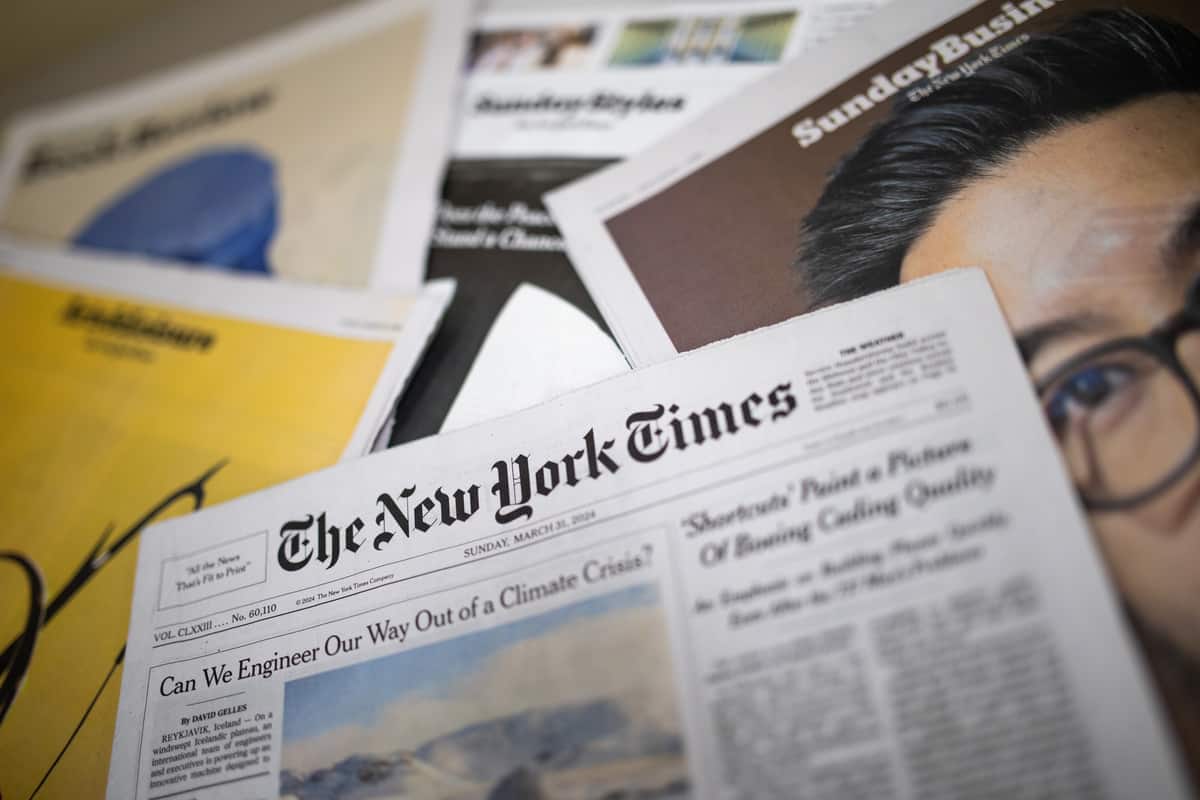Maxwell Hall is the oldest building on campus and only one of a few buildings to make it through the Civil War. At one point, it was a celestial observatory, explaining the dome that rises above the front room. The pedestal the telescope once sat on is still intact. Today Maxwell Hall is the home of 40 student interns who make up the Creative Campus team.
Creative Campus is an art advocacy organization that connects the university with the community through collaborative projects. Interns said they believe art is not just found in paintings or sculptures, it can be found everywhere.
A picture of engineer Fred R. Maxwell, the building’s namesake, is displayed above the mantel in the hallway upon entering the building. Art, blackout poetry, newspaper clippings and coloring pages cover the walls, and large windows around the front of the building facing 4th Street let in streams of sunlight.
Down the hallway is the large workroom where the interns spend most of their time. A wall in the room is painted with chalkboard paint and decorated to reflect some of their newest projects. Tables and chairs fill out the space, with a few computers tucked in the corner.
The interns say they are proud of their building and spend much of their time studying, working and relaxing there. Abby Ratliff, a sophomore marketing major and Creative Campus intern, said she hasn’t set foot in a library all year because she spends all her time in Maxwell.
“We have a very distinct culture,” Ratliff said. “It’s very cool because everyone is trying to expose people to the arts and to new types of culture in innovative ways and it’s all about idea creation and implementation. It’s just deliciously and wildly fun.”
Creative Campus was created in 2005 out of an Honors College project designed to connect university students to the arts. The organization is different from a club because of faculty and staff involvement, the budget and the fact that the students apply to work as interns.
“I feel like us being interns gives us more motivation because this is our internship, this is our job, as opposed to just something we participate in,” Ratliff said.
Two professors, Rachel Raimist and Andrew Raffo, serve as the co-directors. Susanne Hibbard, the administrative secretary, and Michelle Bordner, the coordinator, are the two full-time staff members.
The group is made up of fewer than 40 student interns, but they champion their diversity, representing 24 different majors, from arts and sciences to business and communications.
“Creative Campus is a great opportunity to meet a whole bunch of different sides of campus and do a lot of work in multiple disciplines,” Creative Campus intern Brett Dunn, a sophomore majoring in journalism, said. “Most of the time as college students we are stuck in our own major seeing the same people and going to the same classes. It’s a great way to experience the many facets of the university.”
Every Monday Creative Campus holds professional development meetings where they participate in workshops on resumes and cover letter writing. The interns meet at noon on Wednesdays in Maxwell Hall. Bordner conducts the meetings to make sure everything is on schedule and tasks are being completed.
Raimist said at the beginning of the year, they have a major brainstorming session at orientation where they talk about what the interns like, what they don’t like and what the community needs. They don’t want to repeat any ideas other organizations are implementing.
Bordner said they started with about 40 post-it notes of ideas on the wall in the workroom and the ideas that have the most energy and momentum are brought to life during the year.
“The ideas they start with at the beginning of the year are almost never the ideas that we end with at the end of the year,” Bordner said. “Because one person brings an idea and then everybody else comes in so we have a lot of different voices that help to shape what ends up actually happening.”
Ratliff said they all become best friends after the first month because of time and commitment they put into the organization. This year’s interns are especially close because, for many of them, it was their first year working for Creative Campus.
“It’s very cool to work with all these people who you really care about and who all have similar ideas about changing the world, and our community, for the better,” Ratliff said.
Creative Campus just wrapped up the event Art in the Park where they did printmaking activities, made a collaborative art piece, hosted dance lessons and learned about art history and poetry with children in the community. The ARTifacts team has been working monthly on soapmaking, macramé, printmaking and bookbinding.
Retrospective is a new website recently launched with a map of Tuscaloosa that pinpoints community stories students submit.
Dunn is working on a project called Call from Selma. Interns are working with a telecommunication and film class and professors on the interactive, long-form journalism project about a cold-case Civil Rights-era murder in Selma. The project will wrap up with an event on April 23 at the Dinah Washington Cultural Arts Center downtown.
“The events we develop are based on things we as interns are passionate about developing, it’s not like the faculty decides for us. We come up with project ideas, we plan them and we implement them,” Ratliff said.
The Druid City Arts Festival was a Creative Campus project and this year, the organization is launching the Yellowhammer Festival. While Druid City focuses on selling community art, Yellowhammer will be music-based with an emphasis on sustainability.
The Yellowhammer Festival will be held Sunday, April 19 at the UA Arboretum from 1-5 p.m. Intern said they are hoping for a Woodstock vibe. While Tuscaloosa offers a few festivals to locals, most seem vendor and market-based, and they want to bring the focus back to the music.
“We were all captured by festival culture and we really wanted to see that in Tuscaloosa,” Ratliff said.
Multiple groups are established between the team of interns to organize Yellowhammer Festival. Ratliff works as one of the heads of the marketing team and has gained experience on how to create a marketing strategy. Others are in charge of the budget, designing graphics and advertisements, stage building, recycling and composting and amps and cords.
“It has absolutely restructured my entire Alabama experience,” Ratliff said. “We all feel a sense of purpose because we’re involved in this and we’re contributing.”







